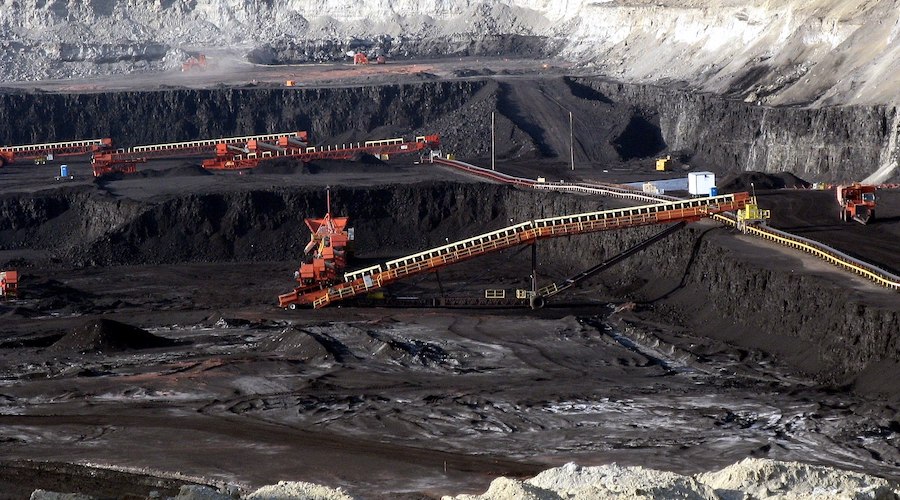Wyoming’s Carbon Valley Innovation Center tasked with finding new uses for coal

The leading coal-producing state in the US, Wyoming, will now be the home of a 5,500-square-foot coal commercialization facility where companies and researchers can work on producing asphalt, graphene, graphite, agricultural char, carbon fiber, and more – using coal and coal byproducts.
Owned by Energy Capital Economic Development (ECED), an organization funded primarily by private investors from local industries and companies, with added contributions from the County and the City of Gillette, the Wyoming Innovation Center (WyIC) is located on a reclaimed mine site in an area known as the ‘Carbon Valley’ and it is expected to feature two buildings and seven demonstration sites for pilot plants.
The Center’s first tenant is the National Energy Technology Laboratory, whose scientists work on applied research for the production and use of clean energy resources. Together with future occupants, the plan is to turn the WyIC into a facility focused on evaluating the commercial viability of high-value nonfuel, low- or zero-emissions products made from coal and extracting pivotal rare earth elements found in the fly ash of coal burned at local power plants.
With 16 active mines, Wyoming accounts for almost 40% of coal production in the US
“Our goal at this new facility is to analyze the immense potential of rare earth elements and their commercialization – a process that could reduce US dependence on foreign markets,” Tom Tarka, engineer at the National Energy Technology Laboratory, said in a media statement. “Northeast Wyoming is a perfect location to begin these studies – with plenty of feedstock and a knowledgeable workforce.”
With 16 active mines, Wyoming accounts for almost 40% of coal production in the US. Between 1865 and January 1, 2020, more than 12.2 billion short tonnes of coal had been mined in the state, most of them in the last 20 years.
To make use of such abundant resources, researchers working at the WyIC facility will also have access to seven half-acre demonstration sites that function as an open-access platform for them to upscale their lab-proven processes from using a few pounds of coal a day to process up to several hundred pounds of coal or coal byproducts daily.
Once projects are operational, the site will be used by the University of Wyoming and Gillette College to train technicians for jobs in advanced carbon processes.
Other Carbon Valley initiatives
In its quest to turn around its economy and reputation in an era in which coal is being phased out, the Carbon Valley has started to host different initiatives that move the region towards a greener future.
One of those initiatives is the Wyoming Integrated Test Center (ITC), which is adjacent to the Dry Fork Station and where experts study the carbon capture and reuse industry, with the goal of dramatically reducing carbon emissions.
At the ITC, The University of Wyoming School of Energy Resources is entering Phase III of its CarbonSAFE program – involving safe storage of CO2 beneath the ground.
After winning the Carbon XPRIZE, UCLA researchers are also working at the Center on a project called CarbonBuilt, which takes carbon dioxide emissions directly from coal-fired power plants and other industrial facilities and infuses them into a new type of concrete.
Another prize winner, Canadian company CarbonCure, is working there on improving existing technologies that inject a precise dosage of CO2 recovered from industrial processes into a concrete plant’s reclaimer system so that it is converted to a permanently embedded mineral with strength-enhancing properties, which can then be incorporated into new concrete mixes.
{{ commodity.name }}
{{ post.title }}
{{ post.date }}


3 Comments
Antonio Jaramillo
Many thanks for your interesting publication. The article about Wyoming´s Coal Valley is very significant, because it shows us the new fields of investigation looking for new coal uses in a moment when coal utilisation in energy generation is dwindling.
F16HetJock
Thanks to the engineers at Standard Oil in the 1930s, and because of their partnership with Nazi Germany, and because of Germany’s ample coal reserves, German coal was converted to gasoline and other petroleum products.
With WTI approaching $70 bbl, why not use Wyoming coal to create the latter?
Klaus Veeltjens
Geopolymer cement uses coal flyash to produce cement for concrete without the heat required for normal cement..
see: https://www.geopolymer.org/tag/davidovits/